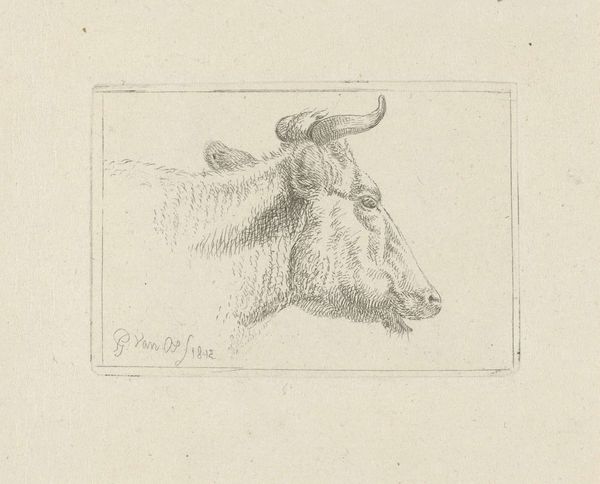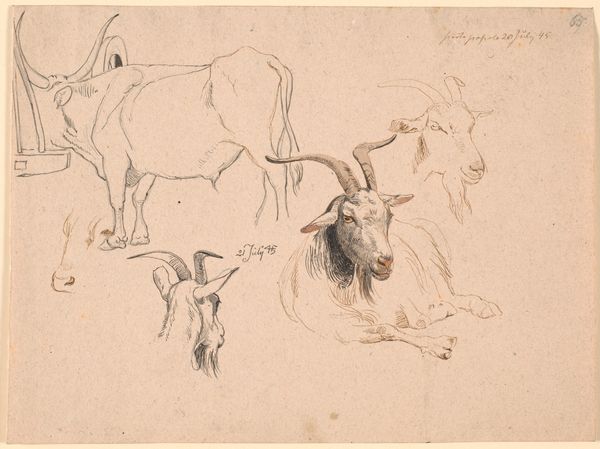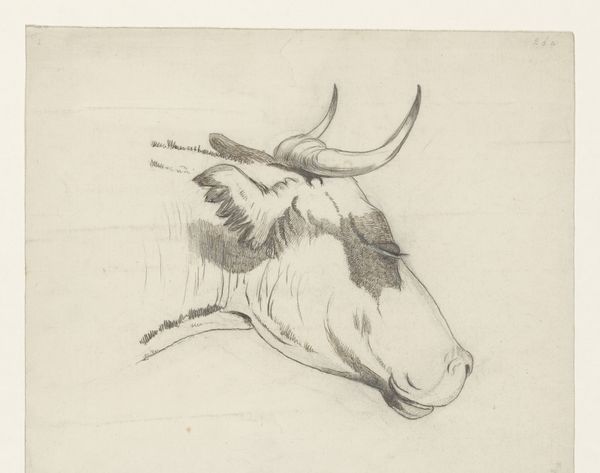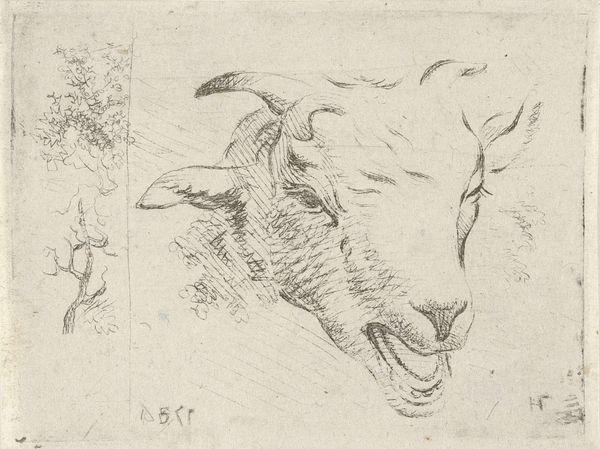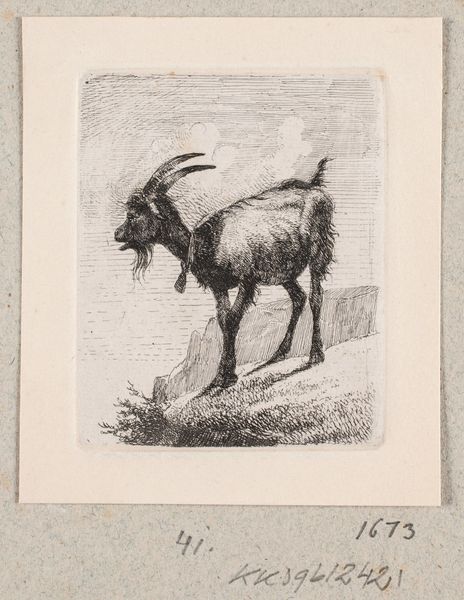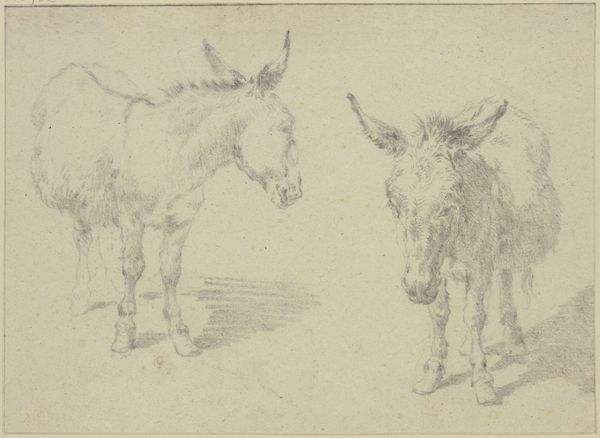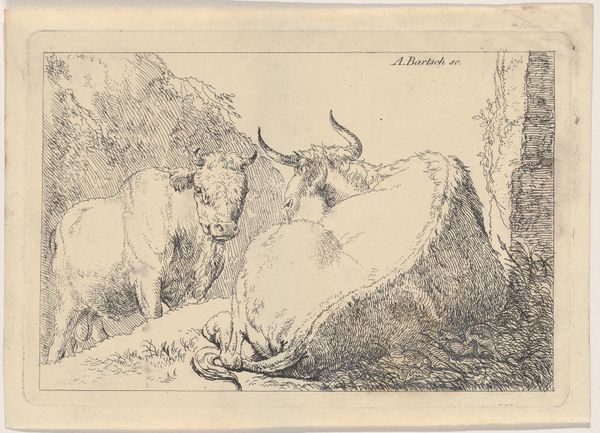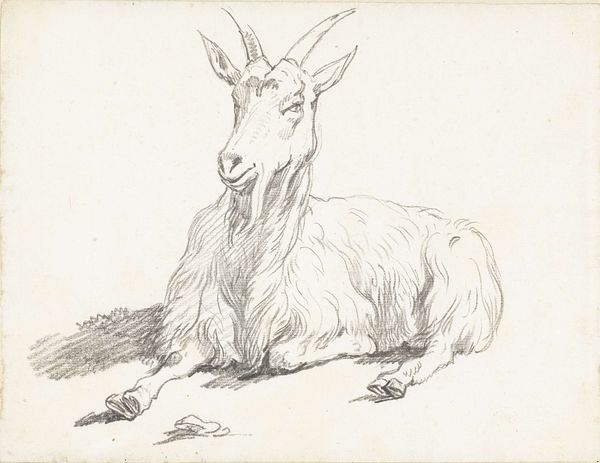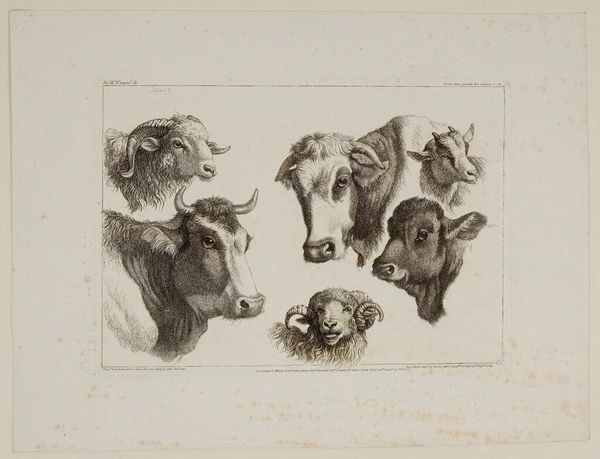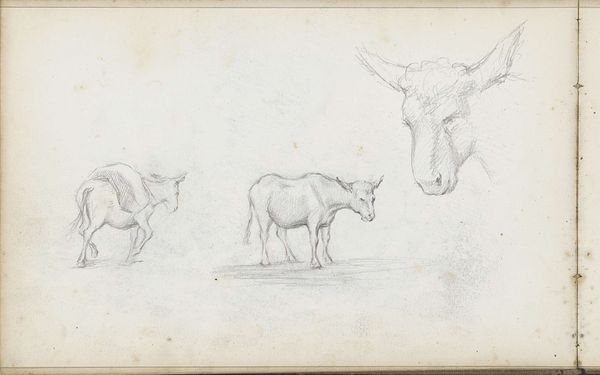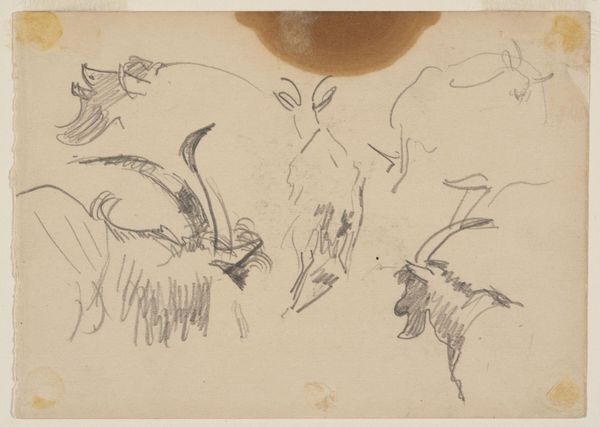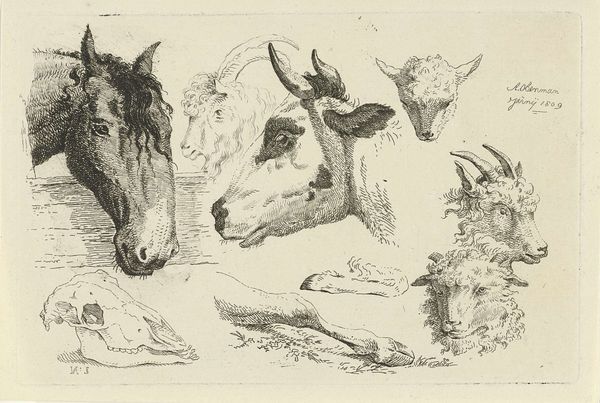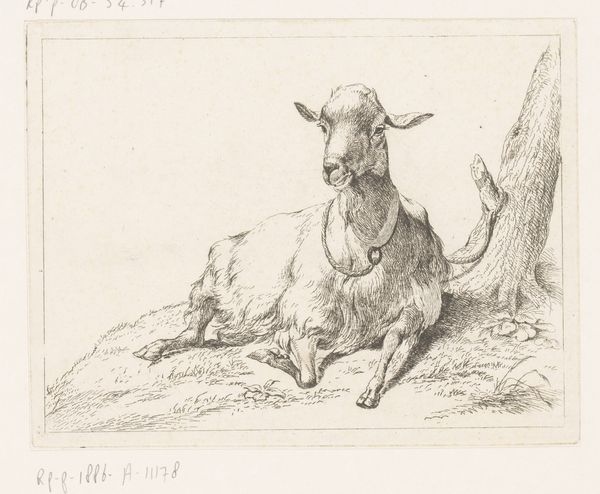
drawing, paper, pencil
#
portrait
#
drawing
#
paper
#
pencil
#
realism
Copyright: Rijks Museum: Open Domain
Curator: Here at the Rijksmuseum, we're lucky to have a wide range of sketches and drawings, and I’m eager to discuss Maria Vos' "Oog van een dier," created between 1834 and 1906 using pencil on paper. Editor: It’s remarkably serene for an animal portrait. The shading gives the creatures an almost ghostly appearance against the stark white paper; soft, introspective. Curator: I agree, and find it especially impressive how much Vos conveys with minimal lines. Look at the texture she achieves on the horns, for instance, or the detail around the eye, which anchors the entire composition. The realism emerges from the artist’s precision with form, even in these studies. Editor: True. However, consider the gaze itself. Often in animal portraiture, especially during this period, the “civilizing” impact of humans on nature was promoted. It’s tempting to see these isolated studies as attempts to portray an individualized, perhaps sympathetic, animal nature during a period where it was quickly vanishing. Curator: It’s fascinating to view it that way. Focusing on a few key parts creates a sense of incompleteness, as though suggesting we only ever catch fleeting glimpses of an animal’s true essence. Editor: And aren’t those fragments, those ‘eyes,’ charged sites for contesting what is considered knowable, acceptable, even desirable about ‘nature’? The question becomes who decides the nature of representation, and to what ends. Curator: That really underscores the complexity of a drawing that may initially appear so simple. The semiotic readings shift based on our evolving socio-political understanding of what animals are and are worth. Editor: Exactly. Looking at these drawings today encourages thinking beyond surface representation. What power structures are at play when representing the non-human? Curator: What started as a technical examination becomes a fascinating exploration of ethics and aesthetics. Editor: It’s why placing the artwork into context transforms it from an exercise in representation to an invitation for deeper interrogation of how power and visibility function.
Comments
No comments
Be the first to comment and join the conversation on the ultimate creative platform.

